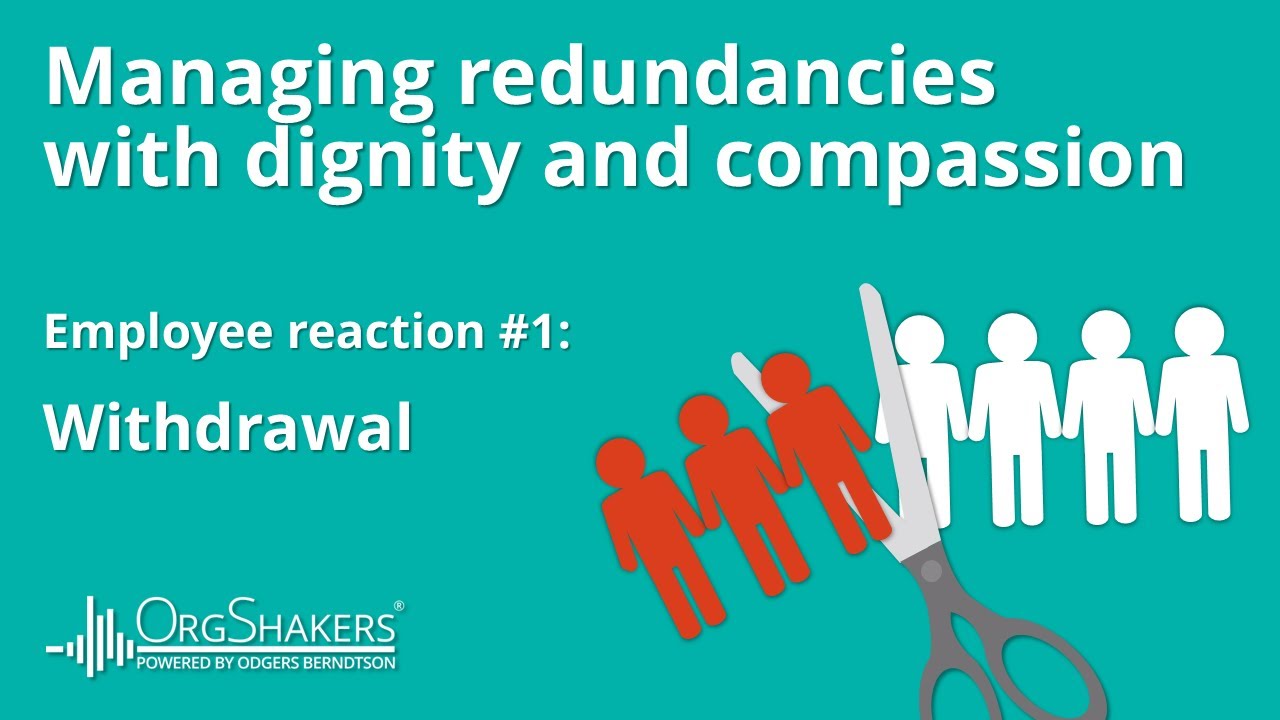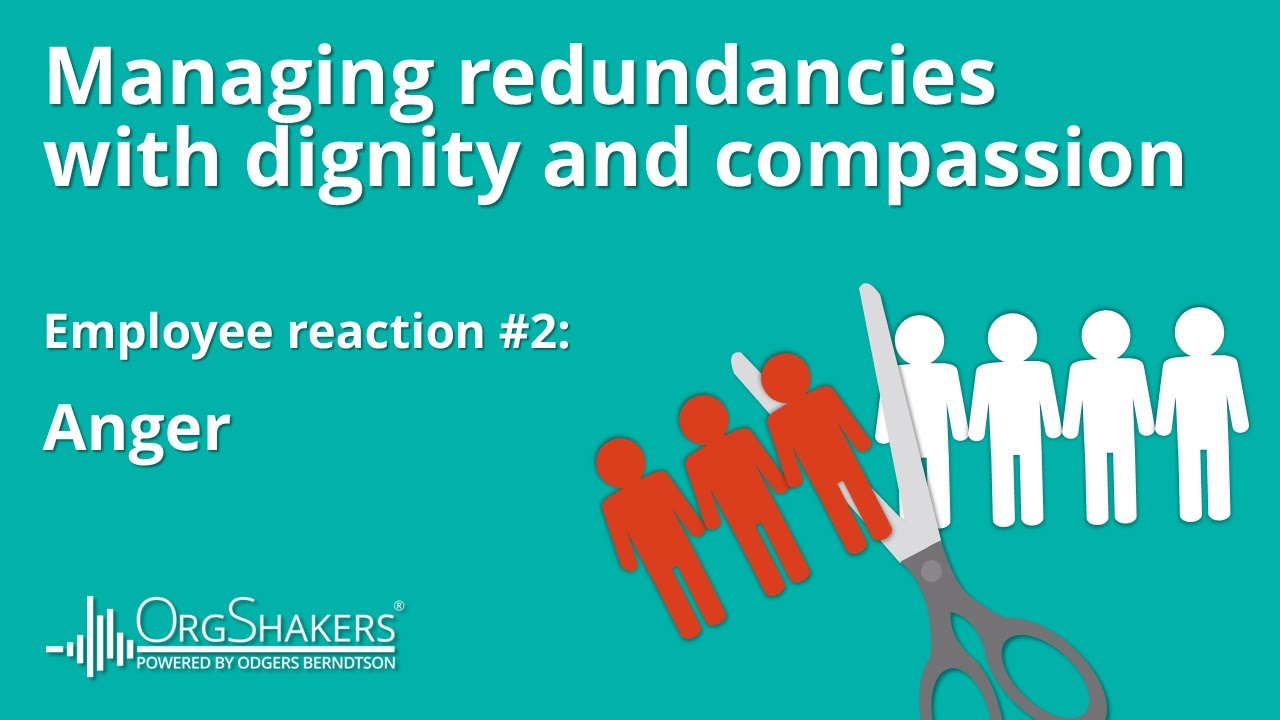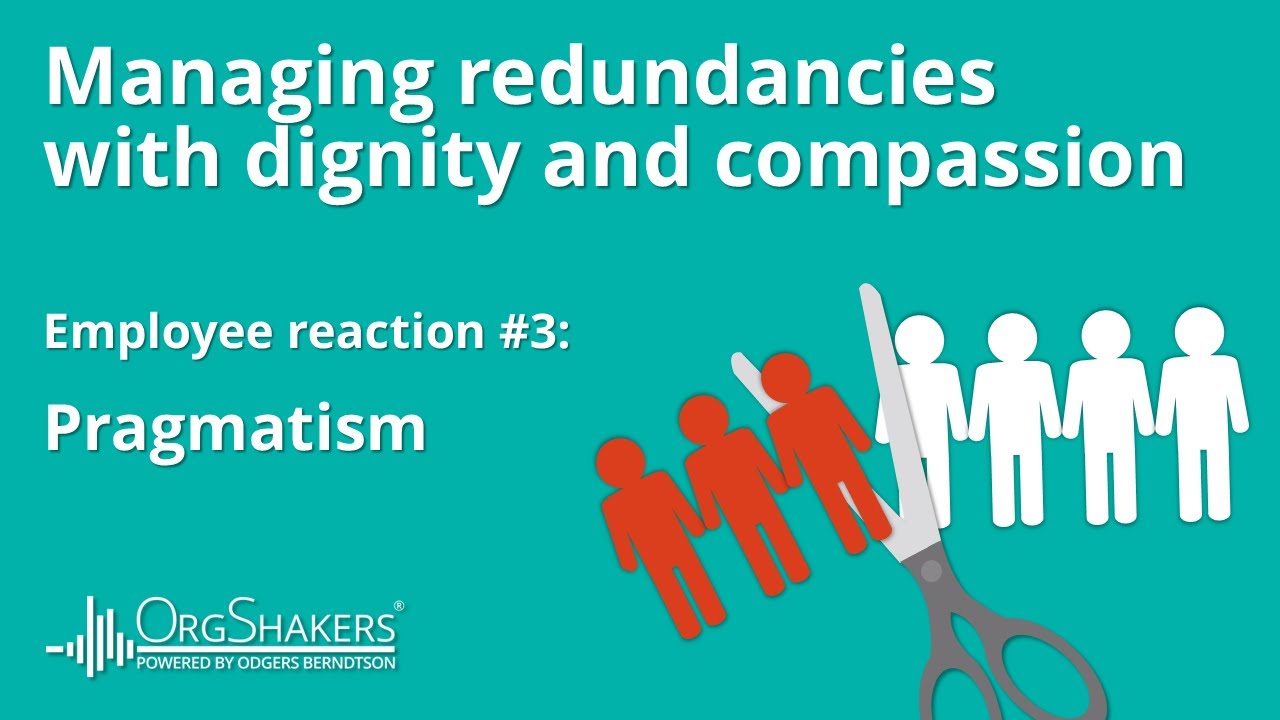Menu
In the midst of leading a large-scale downsizing project, I have seen firsthand the critical difference a high-EQ (Emotional Intelligence) approach makes during redundancy conversations.
I have been handling multiple outplacement meetings on behalf of a client organization undergoing significant transformation. The feedback we’ve received? Unanimously positive – despite the challenging circumstances.
But what makes a high-EQ outplacement process so impactful?
Redundancy is never easy. For those being let go, it’s a moment of vulnerability, fear, and sometimes anger. For those left behind, it’s often a mix of confusion, guilt, and anxiety – so much so that one survey found that 74% of employees who kept their jobs after layoffs said their productivity declined. Emotions run high on both sides, and without care and compassion, an organization can severely damage its morale and its employees’ engagement.
This is where emotional intelligence comes in. When done well, emotionally intelligent redundancy conversations don’t just soften the blow – they preserve dignity, foster trust, and protect company culture.
In this particular project, we have seen how involving an external team can help lighten the emotional load. Managers within the business – many of whom are having redundancy conversations for the first time in their careers – found it deeply difficult. The emotional toll of delivering such news to a long-time colleague or friend cannot be understated.
Outsourcing these conversations to an external, neutral party offers benefits for both the departing employee and the internal team. The individual being made redundant can direct their frustration or sadness to a neutral third party, rather than someone they work closely with. Consultants trained in emotional intelligence are also better equipped to stay composed, read non-verbal cues, and steer conversations away from blame and toward constructive closure.
A high-EQ facilitator will know that tone, timing, and language matter. It’s about more than just the words you say, but how you say them, how you listen, and how you respond to unspoken emotional cues. You must notice when someone’s voice catches, or when their shoulders stiffen, and you must respond with empathy, not platitudes.
This is why I am constantly encouraging my team to reflect on their delivery. Do they sound scripted? Nervous? Detached? These micro-signals can be deeply off-putting to someone receiving life-altering news. I also highly recommend roleplay, trial and error, and constant reflection to build skill and confidence in emotionally intelligent communication, as these will all lend to ensuring those difficult conversations have that oh-so-needed human touch.
In our increasingly AI-assisted workplace, this human skill is more vital than ever. While AI can help draft scripts or talking points, redundancy conversations require EQ, which is a fundamentally human trait.
Another key element of high-EQ redundancy processes is anticipation. Emotionally intelligent leaders think several steps ahead. What phrases could escalate tension? How can we frame information to preserve the employee’s sense of value and dignity?
It’s about maintaining a compassionate tone and controlling the emotional temperature of the conversation. You need to use your head, but also your heart and instinct.
The pandemic accelerated remote working, and today, many redundancy discussions happen via video call. This adds another layer of complexity, as you lose access to much of the body language and subtle social signals that help guide emotional tone. As only a fraction of non-verbal communication comes through a screen, high EQ becomes even more essential.
In an era where employer branding and employee experience are under constant scrutiny, investing in emotionally intelligent outplacement is not just the right thing to do – it’s a strategic imperative. If you would like to discuss how we can help you with this, please get in touch with me at therese@orgshakers.com
Most of us will have experienced the impact of redundancy at some point in our lives – if not directly, then through a friend or family member. It is one of the most intensely stressful events that an individual will ever experience, ranking closely with divorce, serious illness, and the death of a close relative – and knowing this makes having to deliver the news of redundancy one of the most difficult challenges facing any manager or team leader.
So, in this article I will offer my advice on how managers should prepare themselves for redundancy meetings and share videos of my own online meeting rehearsals with a colleague where we address three of the most common employee reactions: withdrawal, anger, and pragmatism.
****************
Redundancy conversations are never easy, and I know highly experienced managers who have sleepless nights worrying about how they are going to break the news to their people. Some try to bottle up their emotions to the point where they can appear somewhat cold and callous. Others try to distance themselves from the decision to make redundancies – “if it was down to me we wouldn’t be letting people go”.
None of this is helpful to the individuals who are at risk of losing their jobs.
In my experience, the best approach for one-on-one redundancy meetings is to deliver the message briefly, simply, and consistently, giving the employee clear and precise reasons why their role is at risk – and then respond to each individual’s reaction to that message with care and compassion.
Immediately after the meeting, a letter reiterating the redundancy message and giving further details of the process should be given to the employee along with any additional supporting documentation.
There are seven key stages to ensuring a successful outcome to these meetings:
1. Legal Considerations: Managers need to be clear whether the one-on-one meetings they are having with their people are either (a) to give the employee notice of dismissal, or (b) to make employees aware that they are at risk of redundancy and that a consultation process will now take place. It is also good practice for managers to make the employee aware of any internal right of appeal procedures.
2. Documentation: Most redundancy programmes will require a series of letters to be sent to the employees who will potentially lose their jobs. The first letter will confirm that jobs are at risk and that the organisation is entering a period of consultation. This should include details of the terms being offered. The second letter confirms that the employee has provisionally been selected for redundancy. The final letter gives formal notice of redundancy. The appropriate letter should be sent to the employee immediately after meeting with their manager.
Internal communications to inform employees who will not be impacted by the redundancy program should also be prepared. These should explain the process and highlight which groups of employees will be impacted. Where appropriate, organisations should also prepare communications for external stakeholders.
A timetable at the start of the process is also useful as a guide both for employees and managers. The timetable should include any steps that the employee needs to take, e.g.: the opportunity to consider alternative vacancies that might be available within the organisation.
3. Frequently Asked Questions: Managers should work with their HR colleagues to identify and sign off approved answers to questions which might arise during the redundancy meetings e.g.: Would my pay be the same if I am offered an alternative role within the organisation? Am I entitled to ask for time off to find new work and attend interviews? What happens to my pension?
Being able to answer these questions in the meeting rather than having to go back to the employee will reassure them that the redundancy process has been properly thought through, and that the concerns of employees have been addressed.
4. Location: When face-to-face meetings are possible, it is important to meet in a quiet, private room free from the risk of interruptions. In glass-walled meeting rooms, seating should be arranged to ensure that the employee is not looking out into a public area.
If managers are meeting with their people online, however, the location is significantly less controllable. Planning and preparation are, therefore, even more important – thinking about what each employee will need in order for them to have the best meeting possible. For example, if an employee is working from home and typically has family members in close proximity, the manager might suggest that for this meeting they need to find a private and quiet space.
This is vital because the conversation must not be rushed or interrupted. Employees need time to process what they are being told. Managers need to be able to read the employee’s emotions and think about how best to react. As a result, there are likely to be long pauses in the conversation, and in some instances it might be appropriate to have a follow-up call later in the day or the following morning.
5. Timing: Most redundancy conversations can be concluded professionally and compassionately in about 15 to 20-minutes – however, it is always wise for a manager to assume they will take half an hour. Managers should also allow sufficient time after the meeting for the employee to adjust to having heard the news before having to spend time with their family. For these reasons, meetings should be booked for the morning or early afternoon. As a follow-up call may also be required, meetings should be avoided ahead of days-off and holidays.
6. Rehearsals: The purpose of rehearsals is to ensure that managers remain in control of the meeting at all times. In preparation for these rehearsals, managers should write down the key points they need to make. This not only helps structure a personal narrative, it also acts as an aide memoire if a meeting becomes emotional and the manager needs to bring it back on track.
It should be noted that some organisations require a pre-scripted statement to be read out to employees, so managers should check the organisation’s policy on this ahead of rehearsals.
Below I have posted videos of three of my own online redundancy meeting rehearsals. Click on the images to see the videos and, as you’ll see, these are not ‘perfect’ meetings – far from it. Rather, they were an opportunity for my colleague and I to review the content and delivery of our key messages and address any issues before meeting with employees.
The first meeting is with “Jo” who I thought would be very upset but who would try to suppress her emotions:
The second meeting is with “Pat” who I expected to respond angrily to the news:
The final meeting is with “Cindy” who tends to be positive and optimistic in most situations:
7. Conducting the meeting: I’ve said that employees who are to lose their jobs are entitled to consideration and compassion. So, what constitutes compassion? I suggest the following:
- The meeting should convey a clear message with no element of ambiguity or doubt. If the employee is to be dismissed at the meeting this should be clear and unequivocal. However, if the meeting is designed to start of redundancy consultation process it should be made equally clear that a final decision has not yet been taken and will only be made once the consultation process is concluded.
- The employee should be told where any notice period will be worked. Alternatively, the employee should be informed that they will be leaving immediately and paid in lieu of notice.
- If the organisation is making any ex-gratia payments (i.e.: payments that are in addition to the basic entitlement) then this should be made clear.
- The employee should be informed that the proposed terms for the severance will be given in writing following the meeting. If the employee wishes to discuss severance terms in more detail the manager should commit to arrange a meeting with a member of the HR team or another line manager the next day or certainly soon after. (Managers should check how the organisation wishes these requests to be met ahead of their meeting with the employee).
- If job search or outplacement support is being provided by the organisation to help an individual find a new position or move into self-employment or retirement, this should be highlighted in the meeting with details provided either in writing or in a follow-up meeting.
****************
In summary, to conduct a redundancy meeting with professionalism and compassion requires thorough and detailed preparation. The process will never be easy, never be comfortable – but enabling an employee to exit the organisation with dignity is something the very best managers strive to deliver for their people.
If you would like to discuss this article, or have any questions about how you can implement a caring and compassionate redundancy programme in your organisation, I can be contacted at therese@orgshakers.com.
Once upon a time, in a workplace not so far away, three employees faced challenges that tested the magic of their HR departments. With the right support from their employers, they knew that they could find their happily ever after…
“Hansel and the Breadcrumbs”
Hansel was excited to start his new job. He had worked hard to land a role in his dream company, but after onboarding, he felt lost in an unfamiliar forest of responsibilities. His manager was always too busy, and any guidance he received was scattered, much like a breadcrumb trail leading nowhere.
Hansel isn’t alone – over half (54%) of office-based employees said they were dissatisfied with their onboarding experience. Without any clear direction, he struggled to find his way, second-guessing himself and feeling isolated.
How can Hansel’s employer help him?
Firstly, companies should ensure structured, well-documented onboarding programs that don’t leave new hires to fend for themselves. Regular check-ins with a mentor or manager can help employees feel guided and supported. A buddy system, where a more experienced colleague helps navigate the first few months, can also work wonders.
And, most importantly, onboarding shouldn’t end after a few weeks. Continuous learning opportunities and career development plans ensure employees feel valued long after their first day. And this sentiment rings true – a Glassdoor survey found that a strong onboarding process improves a company’s retention rate by 82%.
“Rapunzel and the Remote Tower”
Rapunzel was thriving in her fully remote role – until she wasn’t. At first, working from home felt liberating. But over time, isolation crept in, and the excitement of flexible working turned into a lonely existence. She missed casual coffee chats and brainstorming sessions, and despite attending every virtual meeting, she still felt disconnected.
Rather ironically, she’s not alone – 67% of remote workers reported feeling disconnected from their colleagues. This is because a lack of in-person interaction can make employees feel like they’re trapped in a tower, with little social engagement.
So, how can Rapunzel’s employer support her?
Remote work should not mean working in solitude. Employers can implement virtual coworking sessions, casual chat channels, or monthly team-building activities to foster community. Hybrid work options, where employees can meet in-person periodically, can also help combat isolation if this is an option.
Most importantly, leaders should check in with their remote employees regularly – not just about tasks, but about their wellbeing, too. Encouraging employees to set boundaries and take microbreaks is key to ensuring they don’t feel trapped within their own four walls.
“The Three Little Pigs and the Big Bad Layoffs”
The Three Little Pigs worked hard to build their careers, but storm clouds loomed overhead. Economic downturns and restructuring left them anxious about job security. Some of their colleagues had already been let go, and rumors of more layoffs circulated like the wind. The first pig tried to ignore it, hoping it would blow over. The second panicked, applying to jobs frantically. The third, however, sought clarity from leadership.
With about 70% of employees saying layoffs negatively impact workplace morale, how can companies ensure their people feel secure, even in uncertain times?
Transparency is key. Leaders should communicate openly about business challenges and any potential restructuring, rather than letting rumors dictate the narrative. If layoffs must happen, organizations should prioritize empathy, offering career transition support and mental health resources.
For those staying, companies must rebuild trust by reinforcing a clear vision for the future, ensuring employees feel supported rather than expendable. Strong foundations – just like the pig who built his house of bricks – are what keep employees engaged even during turbulent times.
In today’s ever-changing workplace landscape, the magic isn’t in fairy godmothers or enchanted castles – it’s in the HR policies and leadership decisions that shape an employee’s experience. If companies want their employees to live happily ever after, then they must continue their commitment to making workplace wellbeing more than just a fairy tale. If you would like to discuss how we can help you achieve this, please get in touch with us today!



